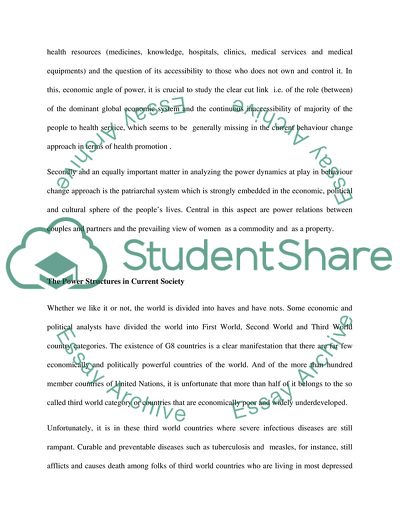Cite this document
(Power Dynamics in a Behavior Change Approach to Health Promotion Term Paper, n.d.)
Power Dynamics in a Behavior Change Approach to Health Promotion Term Paper. Retrieved from https://studentshare.org/health-sciences-medicine/1755227-critically-analyse-the-power-dynamics-in-a-behaviour-change-approach-to-health-promotion
Power Dynamics in a Behavior Change Approach to Health Promotion Term Paper. Retrieved from https://studentshare.org/health-sciences-medicine/1755227-critically-analyse-the-power-dynamics-in-a-behaviour-change-approach-to-health-promotion
(Power Dynamics in a Behavior Change Approach to Health Promotion Term Paper)
Power Dynamics in a Behavior Change Approach to Health Promotion Term Paper. https://studentshare.org/health-sciences-medicine/1755227-critically-analyse-the-power-dynamics-in-a-behaviour-change-approach-to-health-promotion.
Power Dynamics in a Behavior Change Approach to Health Promotion Term Paper. https://studentshare.org/health-sciences-medicine/1755227-critically-analyse-the-power-dynamics-in-a-behaviour-change-approach-to-health-promotion.
“Power Dynamics in a Behavior Change Approach to Health Promotion Term Paper”. https://studentshare.org/health-sciences-medicine/1755227-critically-analyse-the-power-dynamics-in-a-behaviour-change-approach-to-health-promotion.


